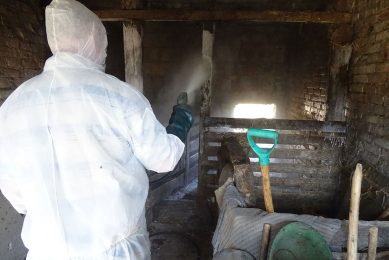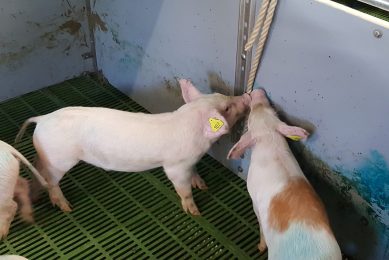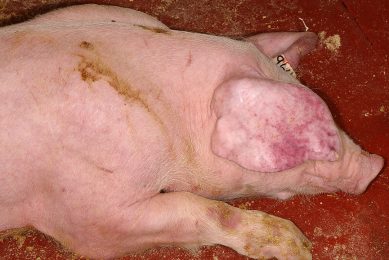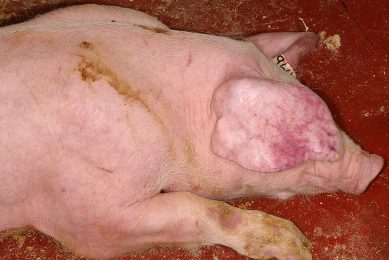ELISA or PCR? Not all tests are created equal
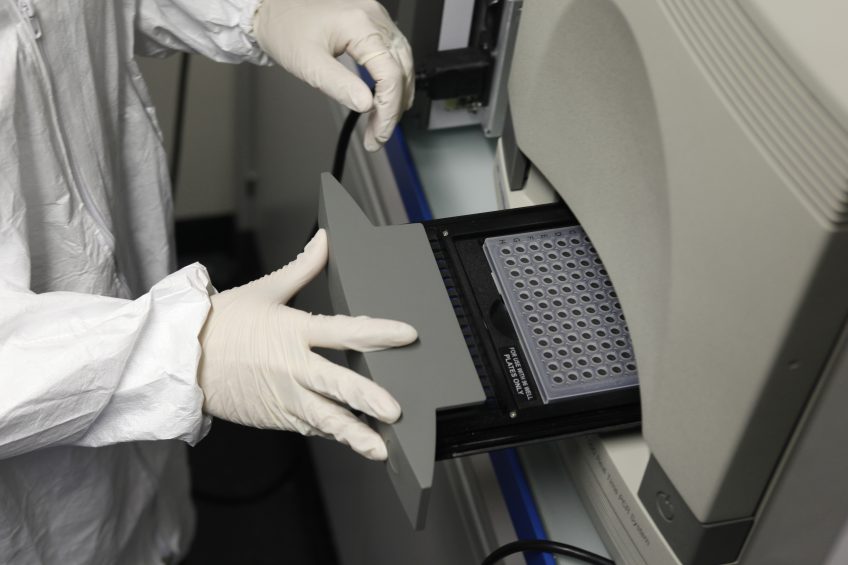
Many people are confused about how to apply diagnostic methods. Although the diagnostics field is rapidly developing, the most used diagnostic techniques are still ELISA and PCR. When to use which, depends on the question. Reviewing the differences between ELISA and PCR can help.
ELISA – A look into the past
When an animal is infected, its immune system will build antibodies against the causative pathogen as a reaction to the infection. ELISA, an acronym for Enzyme-linked Immunosorbent Assay, is a diagnostic test designed to detect these pathogen-specific antibodies. While ELISA tests can also be used for antigen detection, it is mostly used for the detection of antibodies. If a specific pathogen’s antibodies are found in the blood, it means the infection occurred sometime in the past. The pathogen itself may, however, no longer be present.
ELISA is used to monitor herd health by screening for changes in antibody status. The big advantage of ELISA tests is the time window for detection of the infection is much longer, making it more probable to detect whether an infection is happening or has happened. It is often used in the field because it’s an easy-to-use detection method for both large and small laboratories. Antibodies in the blood samples are relatively stable, making sampling and transport easy.
ELISA has been available globally for more than 20 years, and a lot of experience has been assembled with this type of test. Because ELISA provides herd level information of past infections, it can test positive for antibodies long after the infection has left the herd, in some cases, the pig’s entire life. To detect new infections, veterinarians often use ELISA antibody levels to track historical changes in the herd. By comparing previous antibody levels with the current status, they can gain insight into whether a new virus or pathogen infection has recently occurred in the herd.
For example, the swine influenza virus (SIV) will only actively spread for about three to five days within a herd. Most of the time, farmers don’t identify the disease transmission this early in the disease cycle. By the time veterinarians are called in, they would typically test using ELISA to determine if SIV has moved through the herd. This way, they can adjust their management practices and react quicker when the infection re-emerges.

PCR – A look at right now
PCR (Polymerase Chain Reaction) is a diagnostic test designed to confirm an individual pig’s clinical disease, a current infection or to diagnose the cause of death in pigs. PCR is designed to detect the pathogen itself by detecting its RNA or DNA. PCR amplifies very small traces of DNA and RNA of the pathogens which are then detected in the assay. Watch these videos to see how PCR works: http://www.thermofisher.com/pcreducation
PCR is especially valuable in the early stages of an infection when antibodies have not yet been built. It gives an immediate answer to the current infection. It’s a more complicated test, but PCR offers information about the animal’s or herd’s current infection status, and therefore offers significant value to the veterinarian and farmer.
With PCR, it is important to be early in the infection process. The window of time for detection is much shorter for this type of test. Like ELISA, PCR results are available very quickly – usually within a few hours. For swine breeding organisations, rapid results are important. For example, if a breeding organisation wants to run a semen test to ensure they don’t have a virus or disease in the semen, they’ll want results in three to four hours, and that’s easy to accommodate with PCR.
Figure 1 – Course of PRRS immune response. Antibodies are available long after the virus has been cleared from the animal’s body.

Sample quality is critical for PCR testing because RNA and DNA samples are not very stable or robust. So, a quality PCR sample needs to arrive at the diagnostic laboratory quickly under the correct environmental conditions.
When to use which?
ELISA and PCR give complementary information about an infection. The value of a combination of both ELISA and PCR, when used at the right time in the disease life cycle, is that veterinarians and farmers have a more complete picture of the infection. This can help detect disease earlier and make management decisions much faster on the farm to stop the spread of disease that ultimately will save the farmer money.
Practical examplesSome examples can show that for effective disease management, both diagnostic methods, ELISA and PCR, are required. In Ireland, a producer and vet had instituted a quarantine programme but were still experiencing outbreaks and secondary infections. All the while, the animals were shedding PRRS and causing outbreaks as they were moved to other areas of the farm. They used, however, ELISA only for monitoring. This meant they were completely missing all new PRRS outbreaks that would have been detected using PCR. Another example is from a scientific study with a swine integrator in Spain. They had PRRS negative gilts coming into a three-month quarantine area where they received a PRRS vaccine before being moved onto PRRS positive farms. The integrator assumed that after three months the animals would be clear from shedding the vaccine virus. Study data using a PCR test indicated, however, that the gilts were PRRS positive until two days before they were scheduled to move. The integrator started using PCR to ensure the gilts were not shedding before they moved them and continued to use PCR post-movement to confirm there were no new outbreaks. |
If there is a new sick animal or group of animals, it is advisable to start with PCR because it’s real-time detection and can provide answers early in the disease cycle. Antibodies don’t typically show up until seven to 14 days after an infection hits. If PCR is negative, it’s best to wait until antibodies would be present and then to run an ELISA to confirm if the disease passed through the herd.
When a disease is endemic in a region, antibodies will be found with an ELISA test during the pig’s entire life. In that case, the application of PCR in a timely manner will give a better chance of identifying the actual infection and confirm a new outbreak when it’s occurring. At the same time, ELISA can help by monitoring stability or a rise in antibody levels.
If a farmer wants to sell or transport pigs, he may be required to confirm disease history and ensure they are not currently infected. ELISA would be needed to confirm the history of the animals or farm and PCR to confirm the current health status of the pigs.



